July 1, 2011 – As we celebrate our country’s birthday today it is important to remember what was going on elsewhere in North America at the same time. 144 years ago the Constitution Act officially proclaimed Canadian Confederation on July 1, 1867, with four provinces: Ontario, Quebec, Nova Scotia and New Brunswick. Subsequently Canada assumed control of Rupert’s Land and the North Western Territory to form the Northwest Territories. At that time the Métis’ grievances ignited the Red River Rebellion and the creation of the province of Manitoba in July 1870. British Columbia and Vancouver Island (which joined in 1866) and Prince Edward Island joined the Confederation in 1871 and 1873, respectively. At the time of Confederation, John A. MacDonald, a Conservative, was proclaimed Prime Minister and during the summer of 1867 Sir John A. Macdonald easily won the national election against his rival George Brown.
Canada became a country shortly after the end of the American Civil War (1861–1865). Eleven Southern slave statesdeclared their secessionfrom the United States and formed the Confederate States of America, also known as “the Confederacy”. Led by Jefferson Davis, the Confederacy fought for its independence from the United States. The U.S. federal government was supported by twenty mostly-Northern free statesin which slavery already had been abolished, and by five slave states that became known as the border states. After four years of bloody, devastating warfare (mostly within the Southern states), the Confederacy surrendered and slavery was outlawed everywhere in the nation. The restoration of the Union, and the Reconstruction Era that followed, dealt with issues that remained unresolved for generations. The 16th President Abraham Lincoln was assassinated 6 days after the end of the Civil War on April 15th, 1865 and Andrew Johnson was installed as the 17th President of the United States of America and remained in that office until 1869.
In the meantime our most southern neighbours, the United States of Mexico, were engaged in their own conflict with the French occupation which began in 1864 and ended in April of 1867. The presidential terms of Benito Juarez(1858–71) were interrupted by the Habsburg monarchy’s rule of Mexico(1864–67) which was also known as the French intervention in Mexico, as the Maximilian Affair and The Franco-Mexican War. This invasion of Mexico by the army of the Second French Empire, supported in the beginning by the British and Spanish. It followed President Juarez’s suspension of interest payments to foreign countries on 17 July 1861, which angered Mexico’s major creditors Spain, France and the UK. Napolean III of France was the leader of this operation, and the three powers signed the Treaty of Londonon October 31, 1861, to unite their efforts to receive payments from Mexico.
The British, Spanish and French fleets arrived at Veracruz, between 6 January and 8 January 1862 intending to pressure the Mexicans into settling their debts. The French army suffered an initial defeat in the Battle of Puebla on May 5th, 1862 (now the Cinco de Mayo)commemoration day) against the Mexican government forces commanded by General Ignacio Zaragoza. The pursuing Mexican army was then contained by the French at Orizaba, Veracruz; on June 14 Veracruz was taken peacefully on December 12. On 12 February 1866, the US demanded the French withdraw their forces from Mexico, moved soldiers to positions along the Rio Grande, and set up a naval blockade to prevent French reinforcements from landing. In 1866, Napoleon III announced the withdrawal of French forces beginning May 31. The Republicans won a series of victories after the end of the French military support to the imperial troops. Napoleon III urged Maximilian to abandon Mexico and the French evacuated Monterrey on July 26. Maximilian’s French cabinet members resigned on September 18th and on December 6 Austrian and Belgian volunteers disbanded and were supposed to join the Mexican Army; however, 3500 of the 4648 volunteers did not enlist, and instead tried to leave the country.
On 13 February 1867, Maximilian and his imperial army withdrew to Queretaro and the republicans began a siege of the city on March 9th and later engaged Mexico City on April 12th. On May 11th Maximilian attempted an escape through the enemy lines but intercepted before he could carry out this plan. On May 15 following a court-martial, Maximilian was sentenced to death. Many of the crowned heads of Europe and other prominent figures sent telegrams and letters to Mexico pleading for Maximilian’s life to be spared, but Juárez refused to commute the sentence, believing that it was necessary to send a message that Mexico would not tolerate any government imposed by foreign powers.
Maximilian was executed on June 19th on the outskirts of Queretaro, by forces loyal to President Benito Juárez, who had kept the federal government functioning during the French intervention. Juárez’s position was further strengthened when the United States deployed troops to the Rio Grande, and threatened an invasion. Mexico City surrendered the day after Maximilian was executed. The republic was restored, President Juárez was returned to power as president in the national capital on May 15, 1867, and 45 days later Canada was born.


